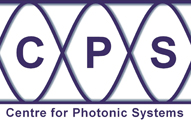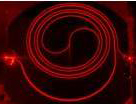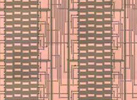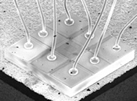| Centre for Photonic Systems Engineering Department Electrical Engineering Division |
 |
 |
 |
 |
 |
| Home | Research | People | Publications | Teaching | CDT | News | Contact |
|---|
|
CURRENT PROJECTS
PREVIOUS PROJECTS |
Modular Ultrafast Sources: MUSIC Objective: Since the development of the first Kerr-lens mode-locked lasers in 1990, practical femtosecond lasers in a wide variety of configurations have delivered handsomely to a significant number of major scientific developments. It has to be recognised that the application space remains limited by the cost, complexity, skilled-user requirements and restricted flexibility of the current generation of ultrafast lasers. In this proposed joint project we seek to lead the way in the development of a new generation of ultrafast lasers. By adopting a modular approach for laser design we am aiming to demonstrate a platform from which lasers can be designed to address a wide range of user-specific requirements. By taking this approach, lasers for use in communications, for example, will have the necessary high repetition rates and low peak powers whereas for biophotonics high peak powers will be delivered to take full advantage of exploitable optical nonlinearities. We plan to work with vibronic crystals in both bulk and waveguide geometries and semiconductor quantum dot structures as the primary gain media. Although vibronic crystals have been deployed widely in ultrashort-pulse lasers the flexibility offered by conventional laser designs is very limited. To remedy this situation we intend to revolutionise cavity design to enable electrical control of the laser output parameters. For example, we wish to provide a means to users to change from an unmodelocked status to a femtosecond-pulse regime at the flick of switch. Also, by exploiting waveguiding in the vibronic crystals we are confident that we can introduce a new generation of highly compact lasers that will combine many of the advantages of a semiconductor laser with the most attractive features of crystal based devices. In some preliminary work in the Ultrafast Photonics Collaboration we have shown the potential of semiconductor quantum dot structures as broadband gain media that Can support the amplification and generation of femtosecond optical pulses. We now seek to build on those promising results and make the push towards truly flexible ultrafast lasers that will be amenable to external electronic control of the gain and loss components. Progress is expected to lead to a new generation of lasers that can give applications compatibility that far exceeds that available in traditional laser system designs. Within this strategy we plan to employ hybrid approaches where the benefits of semiconductor lasers will be combined with the energy storage capabilities of crystals to deliver compact and rugged sources having pulse characteristics that cover a range of durations, energies and profiles. A major part of this project effort will be devoted to the development of control functionality in ultrafast lasers. The intention is to use direct electrical control of intracavity components to deliver "designer options" for pulse shaping, modulated data streams, wavelength tuning and tailored dispersion. To ensure that this research is applicable we will evaluate the laser developments in the context of a set of identified demonstrators. These implementations will be used to show how design flexibility can deliver optimised lasers for biological, medical, communications and related applications. We have put together a research team having complementary of expertise and established track records of international excellence in photonics. This project as a whole will be managed from St Andrews University but all three research groups will undertake interactive research on all aspects of the laser development. We are confident that the work of this team will represent cutting-edge fundamental and translational research and it should represent a world leading strength for the UK in the development of new ultrafast lasers. For further information visit http://www.st-andrews.ac.uk/physics/music/research.html |
2020 Centre for Photonic Systems: information provided by webmaster@cps.cam.ac.uk |